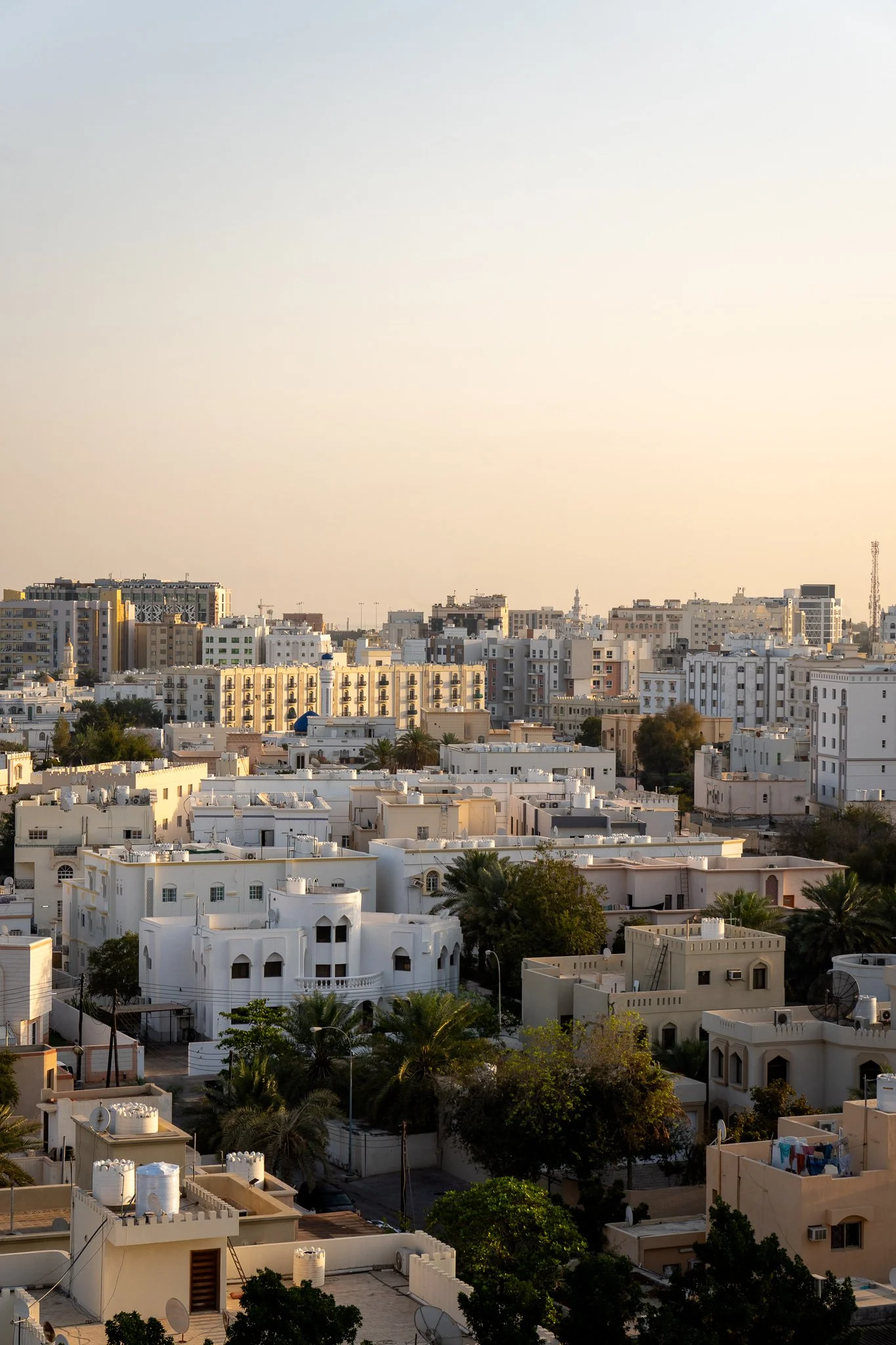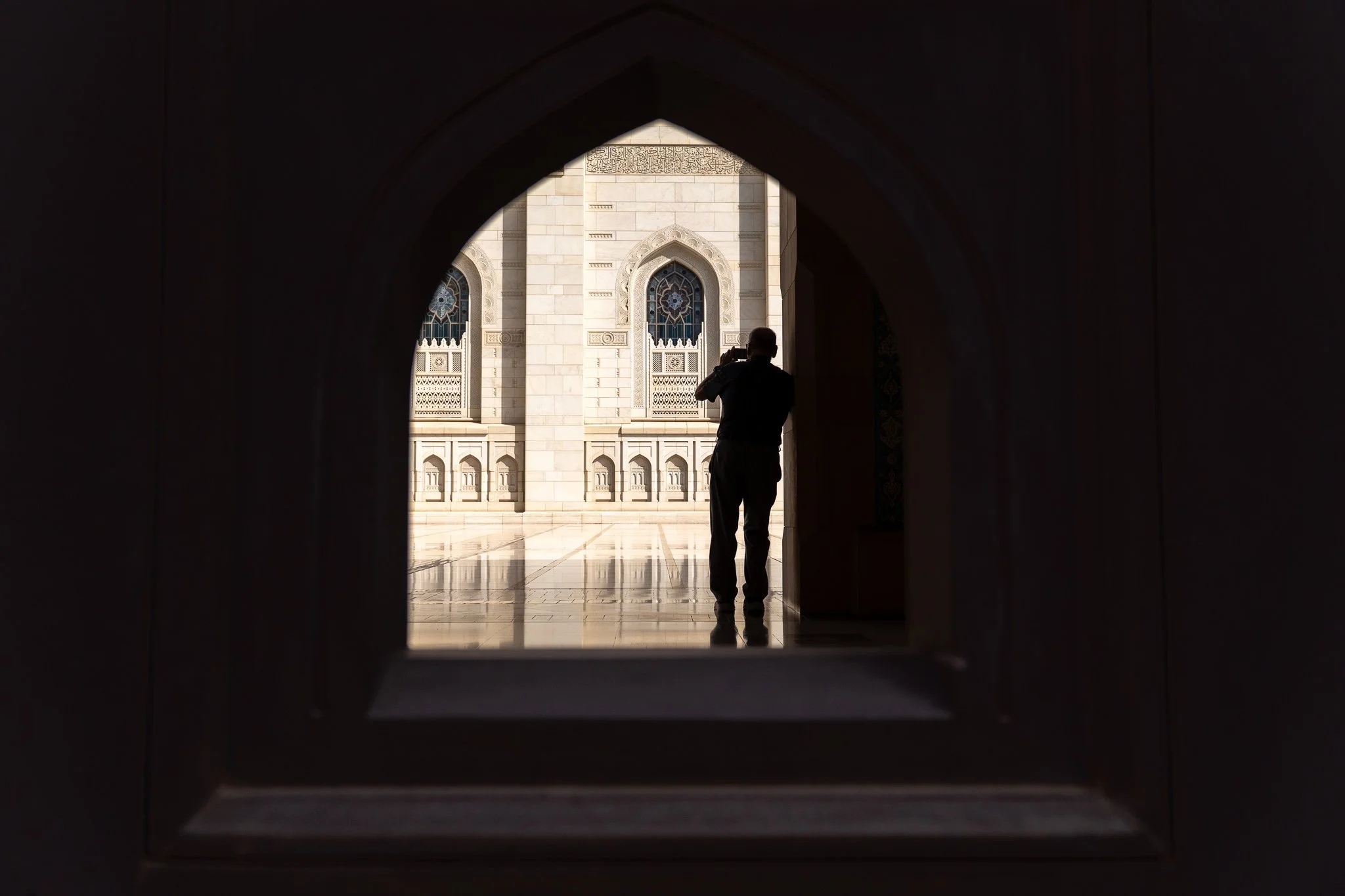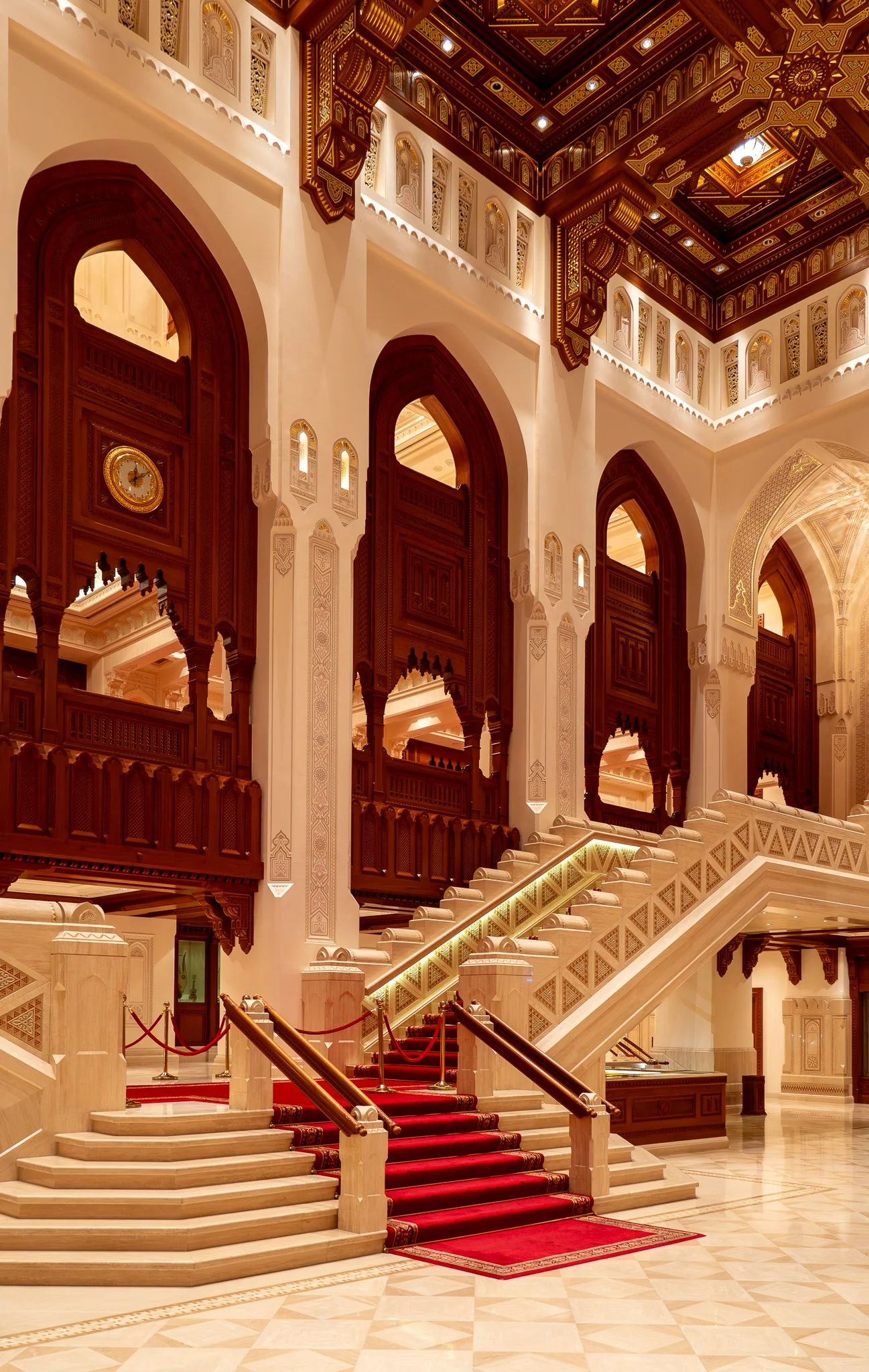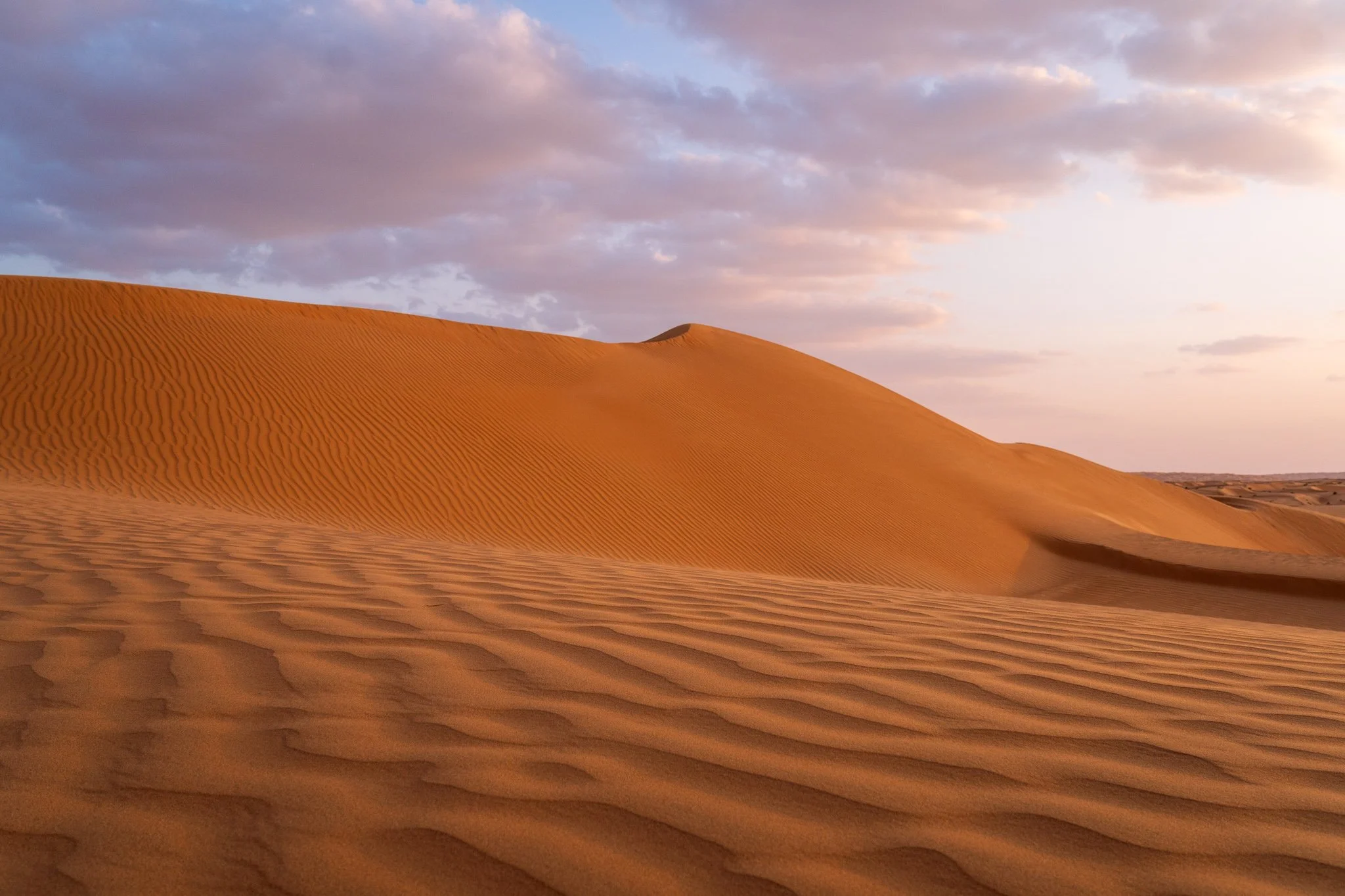A week in Oman
At the end on February 2025 I embarked on a week-long journey in Oman. Why Oman you might ask? After my visit in Morocco in December 2024 I felt the need to explore another Arab country and I settled for Oman. This time I decided to offload all the planning and joined a group of people and travelled along.
Muscat
We landed in Muscat after a long day of travelling. We picked up the rental 4x4 from the airport and headed of to the hotel.
One of the distinctive features of Muscat and Oman in general are its buildings, or lack of any sort of modern skyscrapers. Indeed, unlike other neighbouring states, Oman has a ban on skyscrapers to preserve the country’s culture.
On the first day we visited the Sultan Qaboos Grand Mosque which is open for visits from 8 a.m. to 11 a.m. Personally it was the first time being in a mosque. The clear walls with Arabic inscription crated a sharp contrast with the blue sky and the black shadows in the dark areas. The main prayer hall houses a 14 meters tall chandelier that hangs from the meticulously decorated dome.
The next stop took us to the Royal Opera House, built by Sultan Qaboos bin Said Al Said as he was an avid fan and promoter of classical music. The building reflects a contemporary Omani architecture and the interiors are beautifully decorated.
Despite being only February the heat at noon was already intense at times and more than once while strolling around I looked for a shady place where to rest a bit.
The city develops along the coast and is surrounded by mountains with towering forts right behind it. Some flowers were in full bloom and I took advantage of their vibrancy to add a touch of color the the images.
Sur
Driving along the coast towards Sur we stopped briefly at the Bimmah Sinkhole, a large cavity near the cost filled with water. The sinkhole is the main attraction of a larger park with a walking path, trees and flowers.
The road took us though the small town of Tiwi where we stopped for a bit. Here I found an abandoned couch and I though it had some picture-worthy charm so I snapped a frame.
We reached Sur after the sunset and I was only able to photograph a mosque from the outside before going out for dinner.
The following day I woke up to a worm sunrise that casted long shadows on the mountains towering over the sea.
The day continued with ah visit to Wadi Shab. A wadi is the bed or valley of a stream or in general it can also refer to any sharply defined depression in a desert region.
We took a small boat for a short ride to cross the entrance of the wadi and after that we started a gentle hike following a local guide that explained the damages done by a recent flood in the area. After reaching a large pool we left our belongings on the rocks and went for a swim that took us though narrow passages to a secluded waterfall.
On the way back the sun hit the side of the wadi creating some interesting layers of light. I also found a cat that was enjoying the warmth of the afternoon sun.
Al Hadd
In the evening we drove towards the Eastern-most tip of Oman. Al Hadd is famous for its beaches in which turtles come to lay their eggs. Unfortunately February is not the best season to watch the hatching of the eggs but we were nonetheless able to spot an adult turtle on the beach.
The next day started with an early rise to catch the sunrise.
And it continued with a drive inland toward the Wadi Bani Khalid. We passed through some scenic views and came across the first wild dromedary of the trip.
Desert
After a refreshing swim in the wadi we headed towards Bidiyah, a town at the edge of the desert. And into the desert we went, another first time for me. We deflated the wheels in our cars and started the drive in the dunes escorted by the owners of the camp where we would spend the night.
We reached the camp just in time for sunset and we immediately went out to make the most of the views.
Hyped from the best sunset on the trip so far I set un early alarm for the next day to be able to also enjoy the sunrise. I headed off the fenced camp with the first lights of the day with heavy eyelids from the short sleep of the night and started climbing the dunes to get an open view.
The textures and colors of the desert that laid in front of me offered endless possibilities.
As the sun started to rise the dunes glowed with a warm light.
Before going back to the camp I spent some more time getting lost in the intricate features created by the wind on the dunes.
Bidding farewell to the desert the day continued with a drive to Birkay Al Mouz to visit the abandoned old part of town.
The journey in the Hajar mountains continued and we stopped at the Jabreen Castle, one of the most well-preserved castles in Oman. We reached there just in time for the golden hour.
Nizwa
We spent a refreshing night in Nizwa and wake up early to explore the Souq, the local market. For this occasion I went for the only fixed lens I brought with me and tried to capture the atmosphere of the market through the faces of the people.
The day continued with a drive into the heart of the Hajar mountains having as destination the renowned balcony walk: a hike along the Wadi Ghul that faces the highest peaks in Oman.
We caught the sunset in, a charming village surrounded by palm trees right above Al Hamra. It’s famous for its extensive falaj water canalization system which dates back more than 2,000 years.
On the final day we crossed the highest pass of the journey. On the way up the road was perfectly paved but as soon as we crossed into the other side the pavement left the way to some rough gravel. The driving was slow and required full concentration.
We reached Balid Sayt, a picturesque villages nested in the mountains.
The last stop of the trip was the Nakal Fort, a fort that dates back to pre-Islamic times.
The last stretch of the road lopped us back to the capital for a final sunset along the coast.

















































































